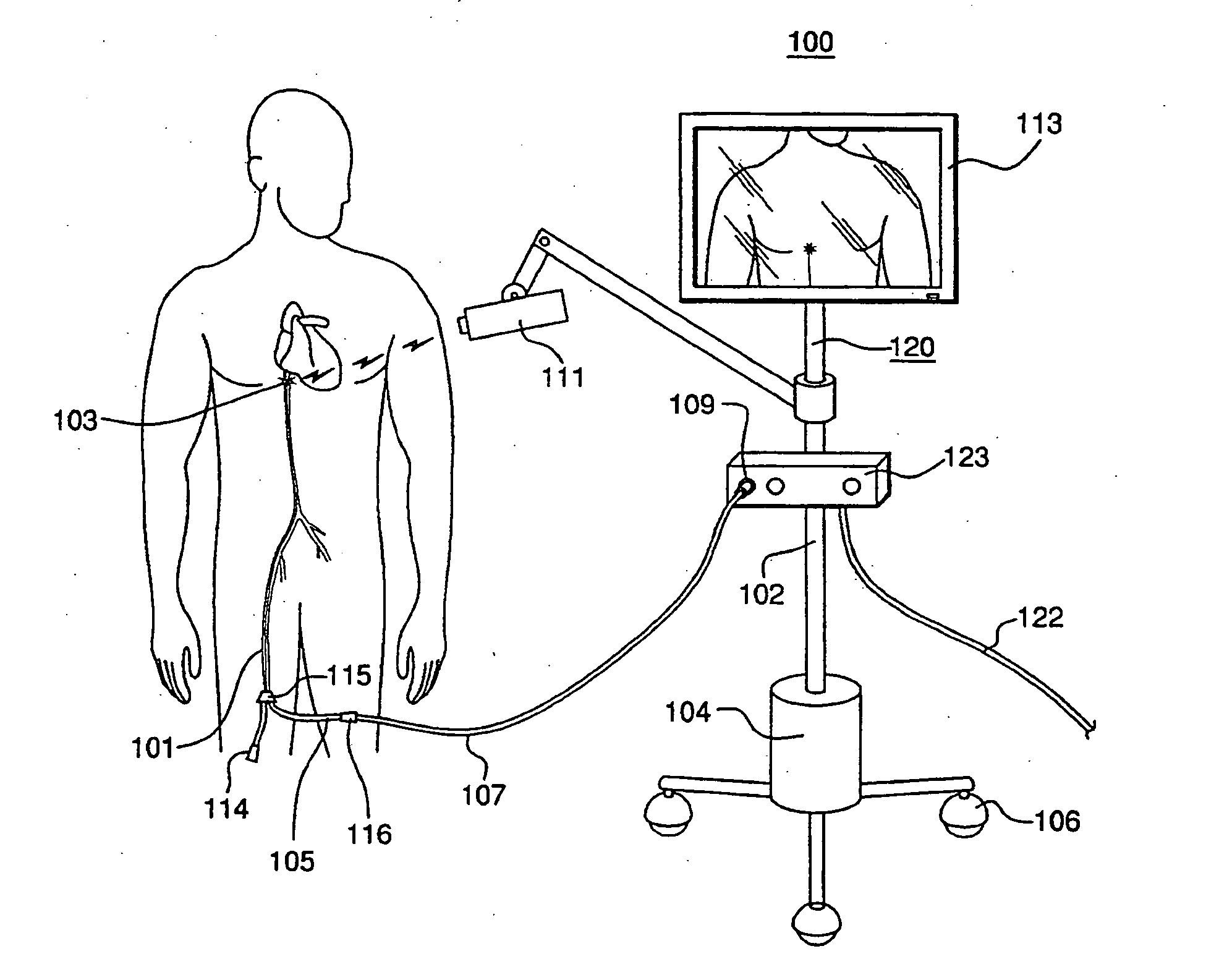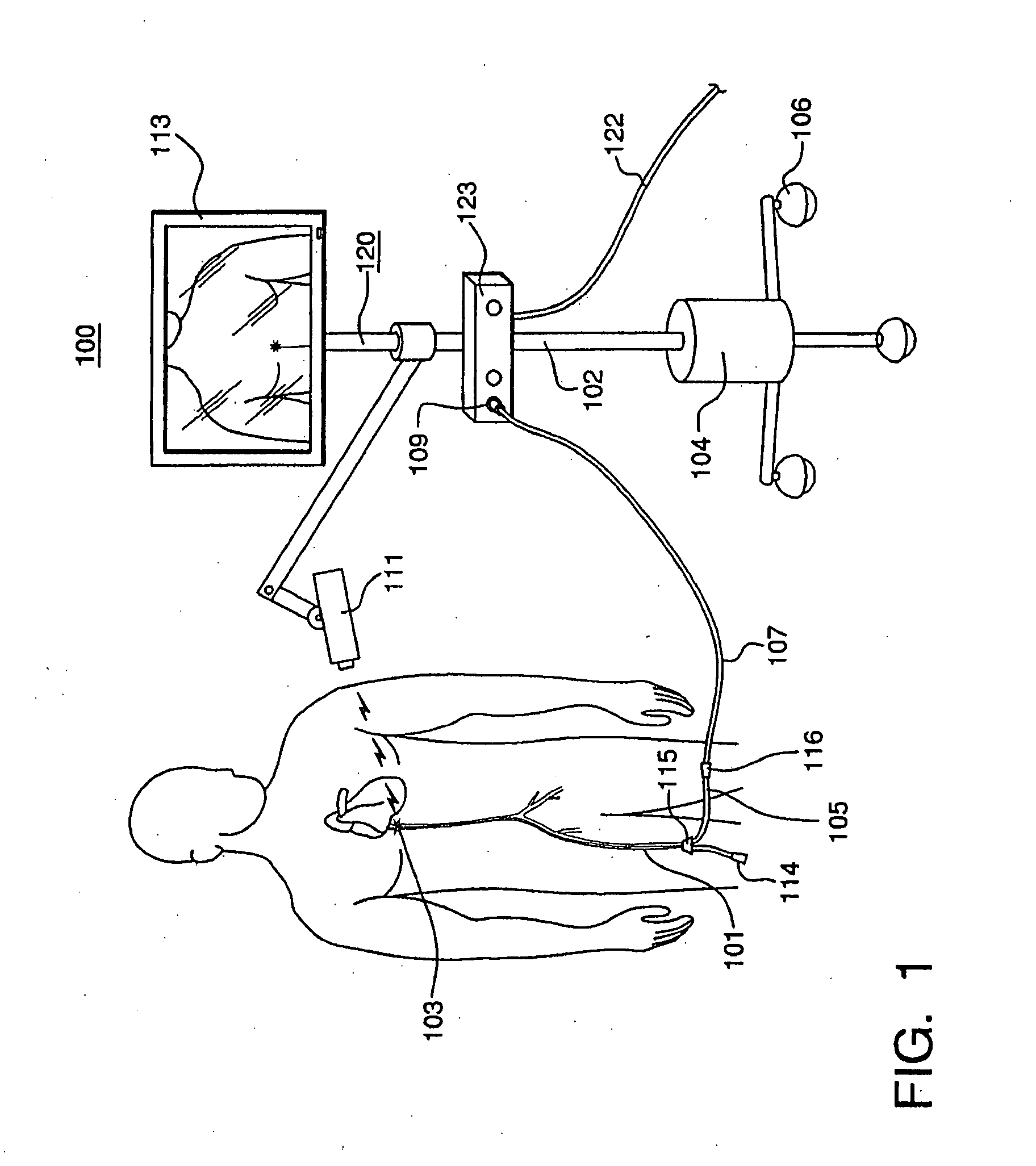Three-dimensional optical guidance for catheter placement
a three-dimensional optical guidance and catheter technology, applied in the field of optical guidance, can solve the problems of increasing hospital costs, slowing patient care, and insufficient placement of catheters, and achieve the effect of rapid confirmation of placemen
- Summary
- Abstract
- Description
- Claims
- Application Information
AI Technical Summary
Benefits of technology
Problems solved by technology
Method used
Image
Examples
example 1
[0177] To demonstrate the effectiveness of the guidance method of the present invention in the alimentary track of a patient, a standard nasogastric feeding tube for an adult human was used. The feeding tube was inserted into the oropharynx of an anesthetized pig. The feeding tube included an optical fiber down the primary lumen of the tube. The tip of the fiber was within 0.5 cm of the tip of the feeding tube. Room lighting was minimized. Using night vision goggles and a camera / monitor system (Gen III intensified CCD camera ITT Industries Night Vision, San Diego, Calif.) insertion of the catheter could be followed very easily from the mouth to the stomach. The point of light emitted from the end of the optical fiber could easily be seen on the monitor as the feeding tube was advanced and placed.
[0178] The system was further tested on a human subject, a 210 lb man. An optical fiber (200 micron diameter core) was inserted into the nasogastric tube until the optical fiber was within ...
example 2
[0182] While demonstrating the effectiveness of the guidance method of the present invention for positioning intravascular catheters, an additional useful feature was noted. When an optical fiber and near infrared light LD system was added, as described above, to a peripherally inserted central venous catheter (PICC) line and placed in accordance with standard PICC practice in a vein leading to the heart, it was observed that as the lighted tip of the catheter neared the heart, the light became modulated by the movement of the beating heart. Moreover, as the lighted tip entered the heart, the light (signal) was greatly attenuated.
[0183] The heart consists of heavy, dense muscle, and the muscle tissue strongly attenuates the near infrared laser light, as compared to the surrounding environment. This is because the heart is suspended in what is mostly open space (lung, chest cavity), which easily transmits near-infrared light. Light emitted from the end of the catheter travels in all...
example 3
[0186] In another example of the guidance system, a light-guided epidural catheter was inserted into the lower lumbar region of a large pig. Pigs are representative of humans for this invention, as shown in Example 1. The epidural space was accessed in the standard manner by palpation of spinous processes, insertion of an 18 gauge Toughy needle to the depth of the epidural space using the air / fluid technique and a glass syringe. A standard epidural catheter was used, having an optical fiber within its lumen, threaded to the distal tip of the catheter and secured to the catheter (tape was used in this example, but any of the above disclosed methods for securing and / or sealing the optical fiber to the catheter would be effective).
[0187] In ambient light, the epidural catheter was advanced in the subject and the transdermally emitted point of light was captured and followed by the imaging system as it moved from the lower lumbar region to the thoracic region. Using a filtered camera / m...
PUM
 Login to View More
Login to View More Abstract
Description
Claims
Application Information
 Login to View More
Login to View More - R&D
- Intellectual Property
- Life Sciences
- Materials
- Tech Scout
- Unparalleled Data Quality
- Higher Quality Content
- 60% Fewer Hallucinations
Browse by: Latest US Patents, China's latest patents, Technical Efficacy Thesaurus, Application Domain, Technology Topic, Popular Technical Reports.
© 2025 PatSnap. All rights reserved.Legal|Privacy policy|Modern Slavery Act Transparency Statement|Sitemap|About US| Contact US: help@patsnap.com



